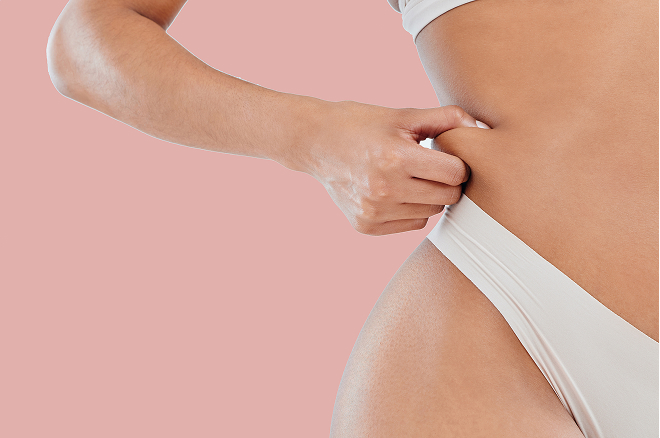Fat Transfer
- List Item #1
- List Item #2
- List Item #3

Who is this procedure suitable for?
Lipograft is the transfer of fat harvested after liposuction. This cosmetic surgery is intended for men and women who have fat deposits in isolated places on their body, which they cannot get rid of, and who wish to enlarge another part of the body.
Fat transfer by fat injection after liposuction is therefore intended for women and men with a lack of amplitude or volume in one part of their body, but who have excess fat in other parts of their body (fat that remains despite diet and exercise). Areas most commonly enlarged are the breasts and buttocks, however, other areas include the lower legs as well as areas of collapse in the body, for example after an injury.
Is fat transfer a recent or proven technique?
Dr. Nicolaidis is known for performing surgical techniques that have been proven to work over time, giving results that remain. Fat transfer is one of the fairly recent surgical techniques. Thus, the longevity of the results of fat transfer procedures, or lipografts, is a little less certain than other techniques. Thus, we would first like to present you with a brief history of fat transfer, or lipografts, by fat injection, after liposuction of your own fat.
Fat transfer was popularized by Dr. Sidney Coleman in New York City in the 1990s, during which time Dr. Nicolaidis was working at the Albert Einstein School of Medicine (New York). Dr. Coleman has transformed Plastic Surgeons’ approach to facial rejuvenation, advocating for injecting small amounts of fat to reduce wrinkles and restore volume, rather than pulling the skin as in facelifts. Plastic Surgeons then gradually began injecting larger and larger amounts of fat into other parts of the body in order to increase volume and improve contours; This transfer of fat in “large quantities” has become increasingly popular in recent years.
More cautious Plastic Surgeons have long been hesitant to inject fat into the breasts for two reasons. First, the transfer of large amounts of fat into the breasts can lead to the formation of cysts or microcalcifications, which can be mistaken for breast cancers during mammograms. Second, there was theoretical concern about the possibility of inducing breast cancer by injecting fat into the breasts; However, no studies or surveys conducted for more than 20 years have shown or suggested such a link.
The procedure
While liposuction is a highly reliable procedure for removing fat, it is important to realize that up to about 50% of the fat transferred by fat transfer (lipograft) can be resorbed (disappear). In such a case, other fat injections (several fat transfers) may be necessary to obtain the desired results by lipograft.
Dr. Nicolaidis performs fat transfers by transferring small or medium amounts of fat to his patients’ breasts, never large amounts. Breast augmentation by fat transfer can be performed in small or medium amounts in order to keep the risk of microcalcification or cyst formation to a minimum.
Buttock implants and calf implants have quite high rates of complications and revisions. For this reason, Dr. Nicolaidis prefers larger fat transfers, rather than inserting implants into these areas. The Brazilian butt lift is an example of fat transfer from areas with excess fat to the buttocks. Fat transfer then becomes a very effective tool through its combination of liposuction and fat injection to sculpt the silhouette.
Surgical and post-operative details
Anaesthesia
Fat transfers normally must be performed under general anesthesia, in the operating room.
Surgical techniques
To perform fat transfer, fat is first removed by liposuction using conventional liposuction techniques. The fat is then concentrated through various means and reinjected into the areas of consideration. Particular care should be taken to avoid excessive injections, which could lead to necrosis of fat cells (loss of fat cells), resulting in greater fat resorption.
Convalescence
Patients should usually wear a compression girdle where fat was removed during the first few days after surgery, which can extend up to a month after fat transfer surgery. In contrast, patients are asked to avoid applying pressure to the recipient areas of fat graft, or fat transfer.
Return to work
In the case of fat transfers under local anesthesia (small amounts of fat liposuctioned and transferred to Dr. Nicolaidis’ office), patients can return to work without delay. For larger fat transfers, patients can usually return to work within a few days of a fat transfer, although the swelling and bruising may remain for a few weeks.
Possible complications
The most common problem after a fat transfer is irregularities on the surface of the skin, including wrinkles and depression of the skin. As mentioned, there is a risk of up to 50% of the fat transferred being resorpted (disappearing). Risks associated with fat transfers also include cyst formation, infection, microcalcification and loss of fat cells.
Patients who read extensively about Brazilian Butt Lifts will be aware of numerous deaths that occurred in both Florida and Mexico following the procedure. These deaths were a result of pulmonary embolus due to injection of fat into major blood vessels. This occurred because fat was injected much too deep. Dr. Nicolaidis can explain further at the time of consultation.
Post-surgery advice
The first week
- Keep your dressings dry and clean;
- Wash yourself with a sponge;
- Avoid putting pressure on the area where the fat was injected;
- Wear your girdles (if applicable depending on the area) continuously;
- Walk for at least 5 minutes at all hours of the day (avoid staying in bed constantly).
It is important to go to your post-operative appointment for fat transfer & fat injections with Dr. Nicolaidis, even if you are doing very well. Contact us now if you do not have an appointment already assigned (the first post-operative is normally assigned before surgery).
After the first week
- Continue to keep your dressings dry and clean until further notice by Dr. Nicoladis;
- Avoid putting pressure on the area where the fat was injected for a minimum of 2 more weeks;
- Wash with a sponge or with a telephone shower, taking care not to wet your bandages;
- Avoid exposing your scars to the sun for a period of 6 months;
- Before taking a full bath or shower, ask for Dr. Nicolaidis’ permission;
- Continue to wear your girdles (if applicable) at all times until Dr. Nicolaidis advises you otherwise;
- Continue to move regularly to avoid complications due to passivity, such as blood clots.
Please note
- It is normal to have swelling and bruising in the treated area during the first few weeks after surgery;
- To counteract the pain, be sure to take your pain relievers as prescribed.
Ready to learn more?
Make an appointment for a consultation or discover our approach
explantation, breast surgery and body contouring.



